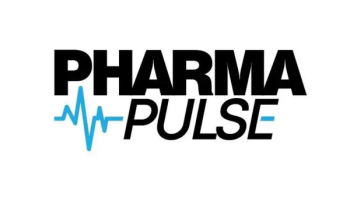Earlier this week, per CBS News, President Trump reached a formal trade agreement with the European Union in which a maximum 15% levy will be imposed on “most” EU exports, including autos and their parts; semiconductors; and pharmaceuticals.1
The EU will also be investing $600 billion in the US and purchasing $750 billion worth of US energy exports through the year 2028.
Deal averts 30% tariff threat while triggering pharma sector concerns
This development comes as an Aug. 1 deadline to reach a deal loomed, and after the EU planned on imposing a 30% tariff on US imports valued at $117 billion if a trade deal was not reached (after Trump had threatened a 30% levy of his own).2
Though it didn’t end of being activated, the idea of invoking the EU’s anti-coercion instrument (ACI) had been floated around, which could have possibly been enacted during a no-deal scenario. As noted by Crowell & Moring LLP,2 “the ACI provides a legal framework for a centralized and structured EU response to third country “coercion” through diplomatic means and, failing that, through any counter measures deemed necessary. The ACI states that one of its objectives is to ensure its responses are always in strict adherence to internal and international legality.”
Key Takeaways
- A formal trade agreement between the US and EU introduces a 15% tariff on most EU exports, including pharmaceuticals, potentially costing the pharma sector $13 billion–$19 billion.
- The tariff aims to encourage pharmaceutical manufacturing in the US with companies like AstraZeneca already committing major investments in domestic facilities.
- Experts recommend stockpiling medications and using forecasting tools to navigate tariff uncertainty and mitigate potential supply disruptions.
Pharma industry faces $13–$19 billion in potential costs
However, with branded drugs being included in the tariff, analysts are now projecting that this deal could ultimately cost the pharma sector between $13 billion and $19 billion. Not only does medication represent the largest European export to the US, the EU is also responsible for nearly 60% of pharma imports entering the US.3 This comes during a time when coincidentally, 60% of life sciences and healthcare leaders are anticipating that the current or forthcoming tariffs and pricing policies will have “some impact” on their businesses.4
Tariff structure could escalate, encouraging US drug manufacturing
Trump had originally noted that a “low tariff” would slowly increase over the course of approximately a year; there had also been talks up a tariff reaching up to 200%, which could still be on the table, given that the idea hasn’t necessarily been dismissed.
The tariff is meant to encourage pharma manufacturers to reshore their production back to the United States, which has been in the works for many players, including AstraZeneca, who plans to invest $50 billion by 2030 in US-based drug manufacturing and R&D, marking its largest single manufacturing investment globally.2 The announcement is headlined by a new state-of-the-art facility in Virginia that will produce active pharmaceutical ingredients (APIs) for weight management and metabolic treatments, leveraging AI, automation, and data analytics.
Forecasting and inventory strategies emerge as risk mitigation tools
It remains to be seen whether some of the aforementioned costs will be offset by efforts to stockpile medications, but experts in the space think that this could be a safe approach for the time being, and analytical capabilities moving forward will be paramount.
“Right now, I'd want to try and stockpile as much inventory as I could in the US, just to take that tariff uncertainty out of it,” explained Brad Stewart, BDO’s national life sciences co-leader. “The product’s already on shore, and I can then sort of deal with what happens, or at least have a little bit more time to do that … One challenge we have is we may not have all the information today to make the decisions that we need to, but we certainly have the tools available to build the model and forecast, so that if someone says tomorrow, the tariff from this country or that country is going to be 22.1%, you can put that into the model and understand what impacts it's going to have on your business, and at least have the information necessary to make those decisions.”
References
1. Trump Says US has Reached Trade Deal with European Union as Aug. 1 Deadline Loomed. CBS News. July 28, 2025. Accessed July 29, 2025. https://www.cbsnews.com/news/trump-european-union-trade-deal-reached-scotland/
2. Saraceno N. EU Threatens 30% Tariffs on $117 Billion of US Goods Amid Trade Standoff. Pharmaceutical Commerce. July 23, 2025. Accessed July 29, 2025. https://www.pharmaceuticalcommerce.com/view/eu-threatens-30-percent-tariffs-us-goods-amid-trade-standoff
3. Satija B. EU-US Trade Deal Could Add up to $19 billion in Pharma Industry Costs, Analysts Say. Reuters. July 28, 2025. Accessed July 29, 2025. https://www.reuters.com/business/healthcare-pharmaceuticals/eu-us-trade-deal-could-add-up-19-billion-pharma-industry-costs-analysts-say-2025-07-28/
4. Saraceno N. How Life Sciences Firms Are Evolving to Navigate Trade, Tariff, and Pricing Turbulence. Pharmaceutical Commerce. July 25, 2025. Accessed July 29, 2025. https://www.pharmaceuticalcommerce.com/view/life-sciences-firms-evolving-trade-tariff-pricing-turbulence
5. Saraceno N. How Pharma Executives Can Prepare for Tariff Uncertainty. Pharmaceutical Commerce. July 25, 2025. Accessed July 29, 2025. https://www.pharmaceuticalcommerce.com/view/how-pharma-executives-prepare-tariff-uncertainty






